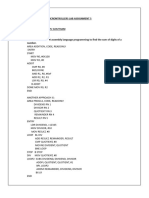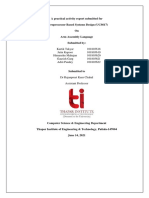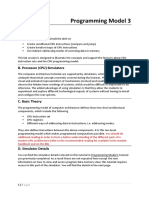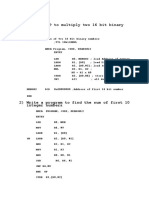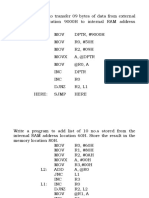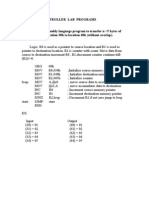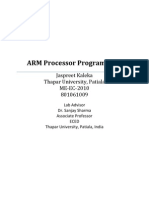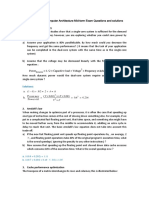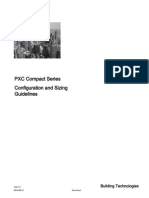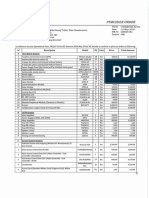0% found this document useful (0 votes)
21 views32 pagesMic Assignment
The document contains a series of assembly language programs for ARM7 microcontrollers, specifically the LPC2148, covering various tasks such as generating Fibonacci numbers, sorting arrays, finding the largest number, calculating factorials, and performing arithmetic operations. Each program is accompanied by a conclusion summarizing its functionality and references for further reading. Additionally, there are examples of interfacing with hardware components like LEDs and LCD displays.
Uploaded by
k.v.karthik1105Copyright
© © All Rights Reserved
We take content rights seriously. If you suspect this is your content, claim it here.
Available Formats
Download as DOCX, PDF, TXT or read online on Scribd
0% found this document useful (0 votes)
21 views32 pagesMic Assignment
The document contains a series of assembly language programs for ARM7 microcontrollers, specifically the LPC2148, covering various tasks such as generating Fibonacci numbers, sorting arrays, finding the largest number, calculating factorials, and performing arithmetic operations. Each program is accompanied by a conclusion summarizing its functionality and references for further reading. Additionally, there are examples of interfacing with hardware components like LEDs and LCD displays.
Uploaded by
k.v.karthik1105Copyright
© © All Rights Reserved
We take content rights seriously. If you suspect this is your content, claim it here.
Available Formats
Download as DOCX, PDF, TXT or read online on Scribd
/ 32

